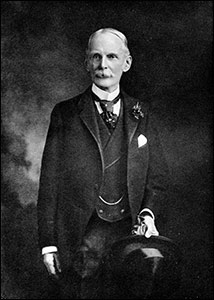|
|||
| Northamptonshire & Bedfordshire Life – May 1981, by Frances I Clark |
|||
|
Politics
|
|||
|
When I recorded my vote at the first franchise given to women in 1918, I voted for Leo Chiozza Money. He was a Liberal and had represented the constituency since 1910. Beyond his extraordinary name my memory does not recall much of him, but he lost the seat in favour of the first Labour member for Wellingborough Mr. Walter Robert Smith who represented us for 4 years. Mr. Smith had been employed in the boot and show industry, and interested himself in that sphere in Parliament, and also in agricultural matters, where he became a member of the agricultural commission in 1919. Another project of his was to nationalise land.
Then too, there was the plural voter. Anyone who owned property in a neighbouring town or village, could have another vote for it I well remember my father John Clark, who owned some houses at Raunds, summoning the horse and trap with driver, to go to the neighbouring town, to exercise his vote. The Conservative candidate during Sir Francis' years as member was Sir Arthur de Capell Brooke Bart. He represented all for stability in the County, and was a Churchman, landowner and advocate of tariff reform. Just as the Whigs in the 18th century used to plant avenues of lime trees on their estates, so the ancestors of Sir Arthur would have planted oak trees. Sir Francis was also a baronet, and lived at Pytchley House, during his time as member, for in those days it was necessary to keep up a position in face of a potential rival. Geoffrey Shakespeare was the next successful candidate for the Liberals, in 1922. Handsome, tall, urbane, he had been one of Lloyd George's private secretaries and was adopted to fight as a coalition Liberal. There were some sly jokes as to whether he was beguiled in search of the pearl of great price, but his attractions were such that he won by 3,938 votes. I went to one of his meetings and recall a descendant of Canon Paul of Finedon, his nephew Mr. Humphrey Paul, coming from London as a barrister to address the electors. We all enjoyed his skill as he poured scorn on the rising hopes of the Conservative and Labour parties. A non-conformist background Geoffrey Shakespeare had also a strong nonconformist background, and this no doubt aided him in his fight. He subsequently married a lady of title. How we all followed his career! During this time there was much talk of taxing landowners. My father, a landowner, who generally voted liberal, was beginning to think of changing his allegiance, although I had seen him shake hands with Lloyd George at the 'Eisteddford' at Caernarvon. He would then have voted Conservative. The young Megan Lloyd George was on the platform with her father. Two Labour members Messrs Cove and Dallas cover 1923-1929. Mr. Dallas was a Scotsman and did much work for the Nene Valley water board. He used to live at Doddington. In 1931, Wing Commander James was returned till 1945, for the Conservatives. At this time, free trade and Maissez faire were beginning to exercise less appeal in a county where unemployment was growing, and imports were dumped in the country from abroad. I was present at a meeting of Mr. James in the Masonic Hall, presided over by Dr. Greenfield who nobly held the fort, until the candidate arrived after being delayed in a neighbouring town. He came with Mrs. James, a Spanish lady who was accompanied by her companion. His up-to-date attitude in solving our problems won him the seat, so after a long period of absence the dark blue colours were flying until the end of the second world war. It was Mr. George Lindgren in 1945, who then as a Labour member was successful, until 1959 when Mr. M.A. Hamilton, another Conservative, was returned. I went to a debate in the House of Commons in 1962 and it was Mr. Hamilton who gave me my permit for attendance in the chamber. Curiously enough as I was waiting outside the House, I saw Lady Megan Lloyd George again, coming down a staircase there. After a quinquennium, Mr. Hamilton was succeeded by Mr. H. Howarth in 1964, as Labour candidate. When the Queen came to Higham Ferrers in 1965, Mr. Howarth was among the procession of the Mayor, when the Queen went to the buildings to receive her tenants. Our present member, Mr. Peter Fry, has represented us as a Conservative since 1969, and had a famous victory in 1979 with a majority of over 32,000. Apart from his ability as a politician, something must be owed to the owner occupiers in this area, for returning a Conservative, as well as the Tory swing. It is a well known fact that when a person becomes an owner occupier he votes Conservative, hence the large number of private houses built since 1967 might well have determined the victory. |
|||
